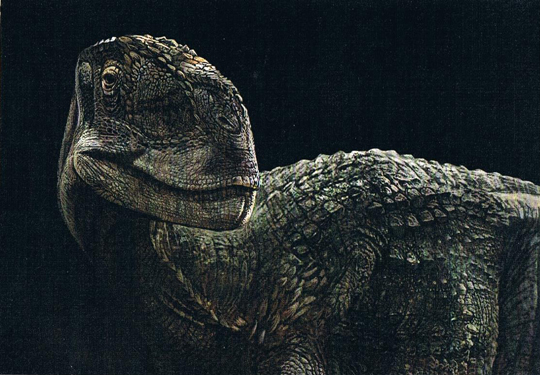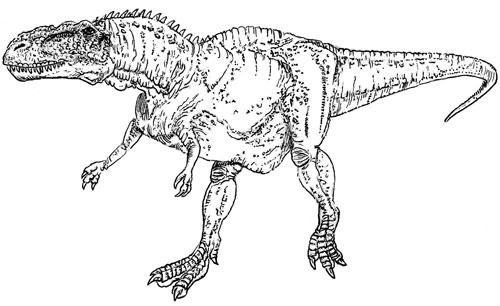Giant Abelisaurid Footprint Discovered in Bolivia
Huge Dinosaur Footprint Discovered in Bolivia
Everything Dinosaur has received reports of a super-sized, meat-eating dinosaur’s footprint being found in Bolivia. The footprint, measuring some 1.15 metres wide is the largest tridactyl (three-toed) print ever discovered in Bolivia. The huge footprint represents a track probably made by an abelisaurid, a type of Cretaceous theropod dinosaur, however, it suggests a carnivorous dinosaur much larger than most of the Abelisauridae.
Probably an Abelisaurid Track
The fossilised footprint was found in the municipality of Sucre in southern Bolivia. Dinosaur tracks have been recorded from Bolivia before, but the three-toed print indicates that something extremely large and fierce roamed this part of South America sometime between 80 and 78 million years ago.
An Illustration of a Typical Abelisaurid Theropod Dinosaur

Abelisaurid artwork. An illustration of an abelisaurid theropod dinosaur. Picture credit: Zhao Chuang.
Picture credit: Zhao Chuang
Omar Medina, a palaeontologist with the Bolivian Palaeontology Network explained that the single footprint could represent one of the largest footprints associated with an abelisaurid dinosaur ever found.
For models and replicas of abelisaurids and other dinosaurs: PNSO Age of Dinosaurs Replicas and Models.
The Geology of Southern Bolivia
The fossil discovery emphasises the significance of the geology in this part of southern Bolivia which has provided ichnologists (scientists who specialise in studying trace fossils such as footprints and tracks), with thousands of dinosaur footprints to study.
To read an article about a Bolivian farmer finding the tracks of an ancient ankylosaurid: Farmer Finds Dinosaur Tracks.
An article highlighting the threats to one of the most remarkable dinosaur fossil tracks found anywhere in the world (The “Huellas de Dinosaurio de Cal Orck”, close to the Bolivian town of Sucre): Dinosaur Tracks in Danger of Becoming Extinct.
Perhaps Twelve Metres in Length
Argentine palaeontologist Sebastian Apestiguia, who verified the find and is in the photograph circulated by media outlets, commented that the carnivorous dinosaur that made this print in soft sediments could have measured more that twelve metres in length, making it much larger than most abelisaurids. For example, Rugops (R. primus) known from Niger in Africa, measured around nine metres in length, whilst the South American Abelisaurus (A. comahuensis), from which the family derives its name, probably reached a maximum size of about six and half metres. To put this into context, that is around half the length of an adult Tyrannosaurus rex.
An Illustration of a Typical Abelisaurid Dinosaur
Picture credit: Everything Dinosaur/Mike Fredericks
A Lucky Fossil Find
Tour guide Grover Marquina, literally stumbled over the footprint whilst exploring the area in a bid to identify suitable tourist sites. The fossil track might represent the largest known member of the Abelisauridae dinosaur family, although a spokesperson from Everything Dinosaur commented that they were aware of an, as yet, not scientifically described Abelisauridae specimen from Turkana in Kenya that might have reached a length of around eleven to twelve metres.
Visit Everything Dinosaur’s website: Everything Dinosaur.


